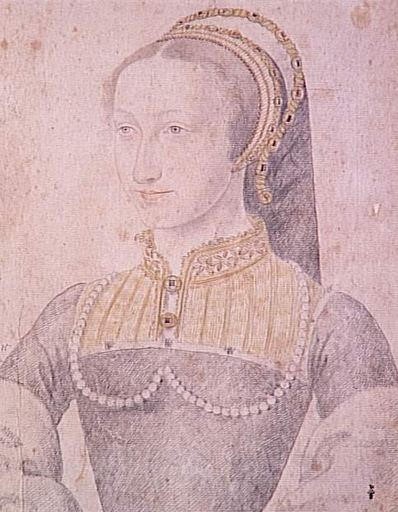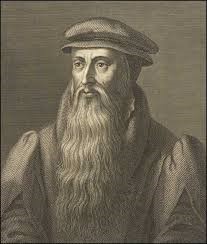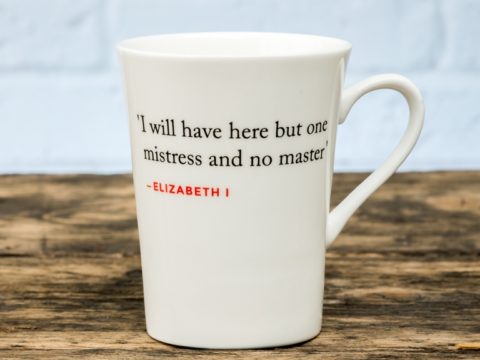Marie of Guise: Life Story
Chapter 8 : Diplomatic Visit (1550 - 1551)
During the following years Marie corresponded regularly with her daughter, whilst carefully drawing towards her goal of being declared Regent. Henri II of France, who now declared that he considered ‘[Scotland as a] Kingdom in my protection I consider mine’ consulted Marie on everything before presenting any policies to Arran, who was, in effect, rubber-stamping Henri and Marie’s plans. As yet, there was no religious discrimination in the policies pursued by France, with both Catholics and Protestants receiving offices and rewards
England continued to make war-like noises, but Somerset’s hands were tied, first by the Western Rebellion of 1549 which absorbed money and men originally destined for Scotland, and then by the outbreak of hostilities with France over the town of Boulogne, captured by Henry VIII in 1546. A peace between France and England was eventually brokered in 1549, with Scotland represented by the French envoys. There was still contention over the fate of the fortresses controlled by the English, but, eventually a final treaty was agreed between Scotland and England at Norham in June 1551.
In 1550, Marie decided to pay a visit to France. Henri II made a personal request for a safe-conduct for her and her entourage, and any French galley sent to fetch her, to land in an English port, if necessary, and be treated as a friend. An additional request for her horses to travel overland was also requested. Edward VI’s council granted the safe-conducts, for Marie and her train, and up to 100 horses, and 140 men to “convey” the animals.
Accompanied by numerous Scottish Lords, Marie embarked at Newhaven on 7th September. The journey took some twelve days in total and was beset by storms.Arriving in Normandy on 19th September, she was reunited with her son, Francois, Duke of Longueville, who was now fourteen. Six days later, she was greeted by Henri II and the French court at Rouen. Her daughter, Mary, Queen of Scots, aged seven, had prepared a solemn speech of welcome, but Marie brushed aside ceremony and ran towards her daughter to hug and kiss her before any speeches could be delivered.
The next few months were a combination of ceremony and politicking, as well as family reunion. According to Sir John Mason, English Ambassador at the French court, the Scots nobles spent a good deal of time arguing amongst themselves, and generally comporting themselves in such a way as to embarrass Marie. However, his reports are not necessarily entirely impartial.
Marie was reunited with her son, only to lose him. He died at Amiens in April 1551. Giving an insight into domestic life, and demonstrating that human emotions remain much the same through the ages, there is a letter from Joan, Queen of Navarre to Marie, saying that she has heard her of the alarming state of health of Marie's son, and sends to know the truth and also of Marie's health. She adds that she and her husband (Marie’s cousin) will do whatever they can to help Marie. Queen Joan was one of the strongest adherents of the Huguenots in France, although they were not quite yet a “party”, but family ties still mattered.

According to the aforementioned Mason, Marie outwore her welcome
‘The Dowager of Scotland maketh all this court weary from the high to the low, such a beggar she is for herself. The King (Henri II) would fain be rid of her.’
Mason believed the delay was caused by Marie’s desire to have the arrears of the pension due to her from France under the terms of her marriage treaty paid over, whilst Henri, short of cash, was promising to send her the funds later.
There was no obvious reason for Marie to return to Scotland at all. She was not regent, and her family were all in France. However, the Scottish Lords requested her to return to ‘for the execution of justice and the ordouring of the cuntrye’. Putting her duty to her daughter, her dynasty and her adopted country before her own pleasure, Marie agreed to return.
In October 1551, therefore, Marie embarked at Dieppe to return to Scotland. Her initial intent had been to return directly by sea, but, driven off course by storms, she took refuge at Portsmouth and sent word to Edward VI that she would take advantage of the safe-conduct that had been renewed to travel overland. A reception was organised for her at Hampton Court. A message was dispatched to the King’s sisters, the Ladies Mary and Elizabeth, as well as other members of the court to invite them to meet Marie.
Marie was treated as an honoured guest by Edward VI, and the Lord President of the Council, who, now promoted to the title of Duke of Northumberland, was the same Lord Lisle who had refrained from pressing military advantage against the Scots after the death of James V. The chief hostess was Lady Margaret Douglas, Countess of Lennox, half-sister of James V and the woman Lennox had married when disappointed of Marie herself. The Lennoxes were not in good odour at Edward’s court, as they failed to embrace the Protestant revolution he was embracing but Court etiquette demanded a suitable show, and for some unknown reason, despite the invitation, the Lady Mary was not present.
Whilst Marie was in England she heard that John Knox, the follower of Wishart, had served his term in the French galleys and been freed. Scenting danger, although she cannot have imagined how great a threat he eventually was to become, she sent an urgent message to her brother, Rene, the Duke of Elbouef, to capture Knox. Elbouef failed and Knox headed for Switzerland where he became even more radical in his views after coming under the influence of John Calvin.By the end of November, Marie was back in Scotland.

On her return to Scotland, Marie appears to have acted in concert with Arran, travelling with him to administer justice throughout the realm. During 1552, Arran and Marie worked together to agree the Anglo-Scots border with the English government.In August of that year, a French adjudicator confirmed his decision, which was illustrated on a map prepared by Marie and Arran.
When Mary I acceded to the throne of England, Marie corresponded with the new Queen in regard to ‘disorders’ and ‘slaughters’ on the Border, committed by the English and not redressed. Mary I, whilst pointing out that the reports she had received ‘declared [the situation] to be otherwise’, but that to show her ‘plain affection to amity’ she would appoint councillors to meet with Marie’s own to resolve matters.




